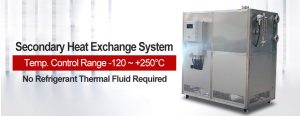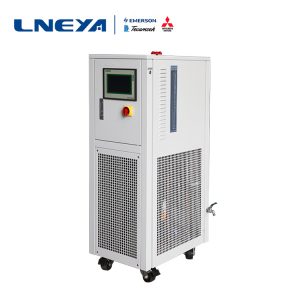The ethylene glycol chiller solution is too cold and too hot
When the ethylene glycol chiller solution
is overheated and overcooled during operation, if you don’t understand these
conditions well, you will not be able to operate the equipment well.

The supercooling phenomenon of the solution
of the glycol chiller refers to the condensed saturated liquid is re-cooled by
a certain device and method, so that the temperature is lower than the
saturation temperature under the condensing pressure. -The occurrence of
subcooling can reduce the flash gas generated by the refrigerant liquid in the
throttling process, reduce the specific volume of the flash gas, increase the
unit refrigeration capacity, and increase the superheat of the return gas,
which protects the compressor Wet stroke operation has certain advantages.
The overheating of the ethylene glycol
chiller solution refers to the difference between the saturation temperature
and the saturation temperature after overheating, which is called the degree of
superheat. The method of measuring the degree of superheat is to measure the
evaporation pressure as close as possible to the temperature sensor bulb,
convert the reading to temperature, and then subtract the temperature from the
actual temperature measured at the temperature sensor bulb. The degree of overheating
should be between 5-8°C. A high degree of superheat will cause the compressor discharge
temperature (discharge superheat) to increase, and the compressor’s operating
conditions will deteriorate and its service life will be reduced. Therefore,
the degree of inhalation superheat should be controlled within a certain range.
Due to the length and thermal insulation of
the solution return pipe (suction pipe) of the glycol chiller, the steam in the
pipe is transferred to the outside and heated. This phenomenon is called
“inhalation overheating” or “pipe overheating”. This kind
of overheating will increase the suction temperature of the compressor and
increase the specific volume of the suction steam, resulting in a decrease in
the refrigeration capacity per unit volume and a decrease in the refrigeration
capacity of the compressor. This is detrimental to the refrigeration cycle.
This problem is called “Harmful overheating.” Therefore, shorten the
length of the suction pipe as much as possible to reduce this harmful
overheating.
In some fluorine refrigeration systems that
use expansion valves, the degree of superheat is used to adjust the degree of
opening of the thermal expansion valve. This phenomenon is called
“beneficial overheating.” Similarly, the superheat generated by the
fluorine steam after reheating is also a beneficial superheat.
If the ethylene glycol chiller solution is
too cold or too hot, there are certain beneficial or harmful places. Please pay
attention to understand when you use it.
Recomendaciones relacionadas
-
Unidad de control térmico de reactores y soluciones para productos químicos
1378El control de la temperatura es un proceso en el que se mide o detecta la temperatura de una sustancia o un cambio de temperatura, y se ajusta la transferencia de energía térmica hacia o desde el espacio o la sustancia para alcanzar la temperatura deseada....
Ver detalles -
Product features of explosion-proof high and low temperature machine
1276LNEYA explosion-proof high and low temperature machine is a relatively temperature control equipment that can be used in the current heating and cooling system. It can be used for simultaneous cooling and heating. It can be combined with various r...
Ver detalles -
Working Principle and Process of Chiller Temperature Control and Pressure Controller
1561Air cooled chiller temperature controller is a two - position regulator, also known as chiller temperature control relay.According to the change of adjusted temperature,the chiller temperature control makes the contact on or off, thus controlling ...
Ver detalles -
 LNEYA Enfriadoras industriales Fabricante Proveedor
LNEYA Enfriadoras industriales Fabricante Proveedor












